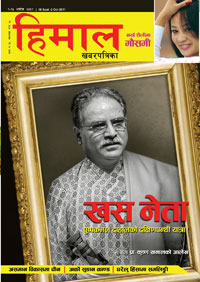 |
There are 101 ethnic and caste groups in the country. At a time when ethnic sentiments are on the rise, the Maoists have added fuel to fire by declaring an ethnic front of the Khas community, the largest group comprising of Brahmins and Chhetris. This community makes up 40 per cent of the total population and if it opens a political front to 'preserve' its own interests, there will be further ethnic polarisation in the country.
Those who see the Khas community as politically and culturally dominant group fail to appreciate the fact that only limited section of this population enjoyed political clout in the past regimes. To be sure, the adoption of Nepali as an official language favored their academic and personal development. Undoubtedly, present ethnic movements in Nepal seeks to make up for the historical marginalisation of the minorities and preserve their religion, language and culture, in order to establish their distinct identity.
Ideologically, there might not be any room to doubt that Maoists want a united and inclusive Nepal. But the modality of state restructuring that they have proposed will ultimately lead to separatist tendencies because legal provisions will stand at odds with cultures and traditions that is proposed as the basis of ethnic states.
But distinctiveness need not necessarily call for division. Unity, even in diversity has been the hallmark of Nepali society and it must be preserved. The most effective way of doing this is to adopt a multi-ethnic basis to federalism. Nepal can perhaps learn from experiences of countries like Ethiopia and Bosnia-Herzegovina. While we must appreciate the ethnic and cultural diversity of our land, there is no mistaking that if badly managed, it will lead to disintegration.


